Continued from the previous page.
DUNGENESS RUINS
Ranger Rene invited us to join her for her talk/tour of the Dungeness ruins but
I opted out of that. Several of us went on ahead to the ruins. I wanted
to get photos without a dozen people around. Even though I saw people
occasionally during the day I was often alone -- my choice.
It's about a half-mile walk to the ruins through the shady, lush
maritime forest:
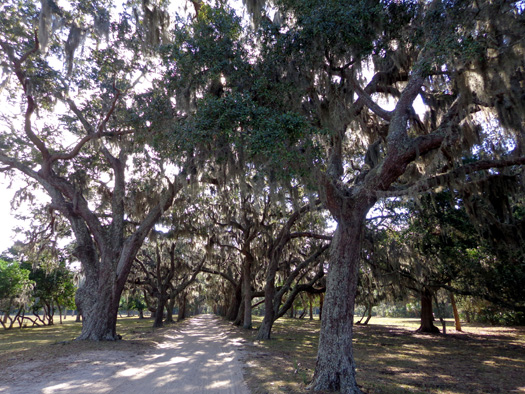
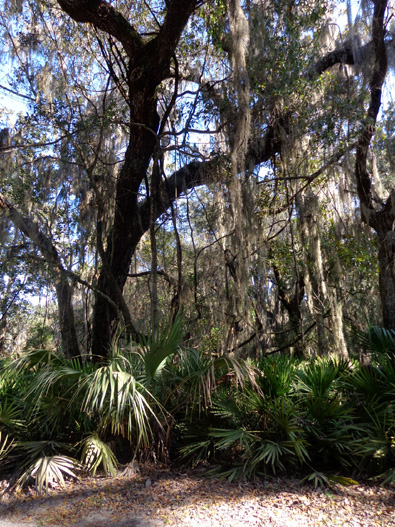
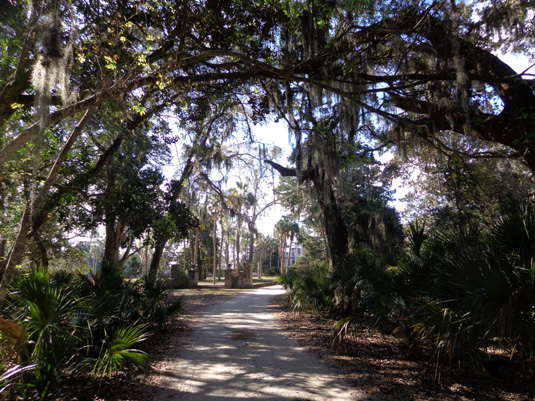
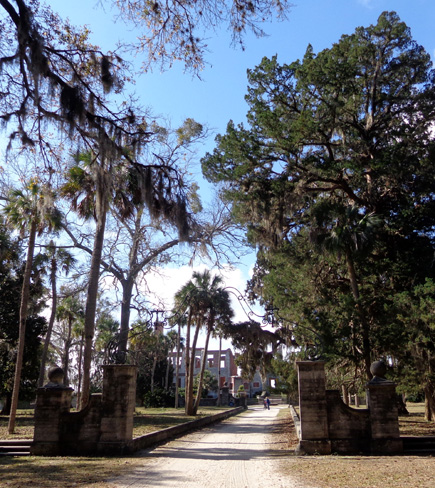
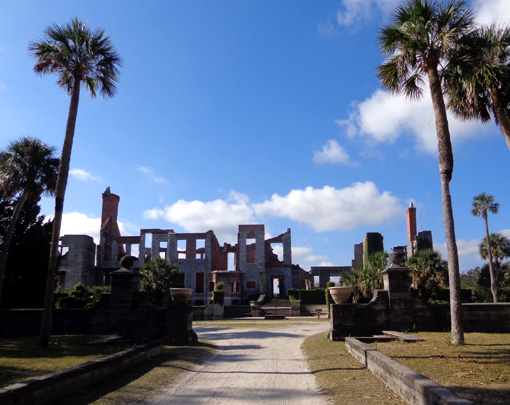
There have been two large homes on this foundation.
Revolutionary War Hero General Nathanael Greene purchased land on
Cumberland Island in 1783. Following his death his widow, Catherine
Greene, constructed a four-story tabby home that she named Dungeness.
Thomas Carnegie and his wife Lucy began building another Dungeness on
the original foundation in 1884. I don't know when the
Carnegie family last occupied the mansion. It had been abandoned before
someone
set it on fire in 1959.
Now only ruins remain, preserved by the National Park Service.
I was fascinated with the remaining walls and took numerous photos of
the structure:
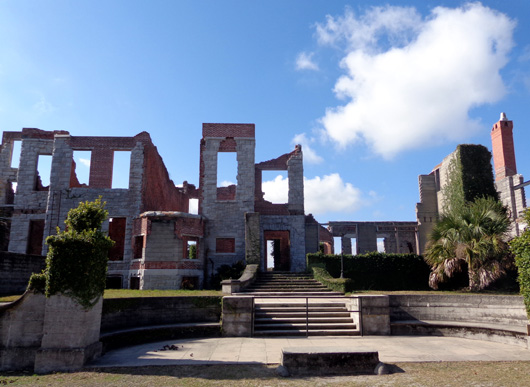
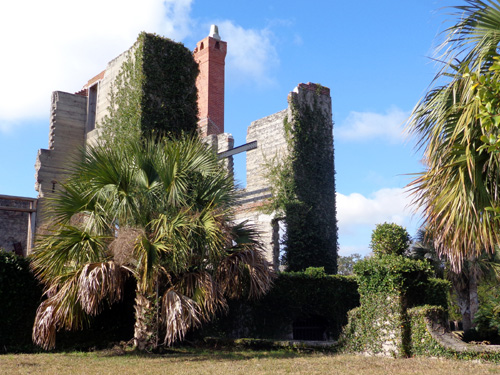
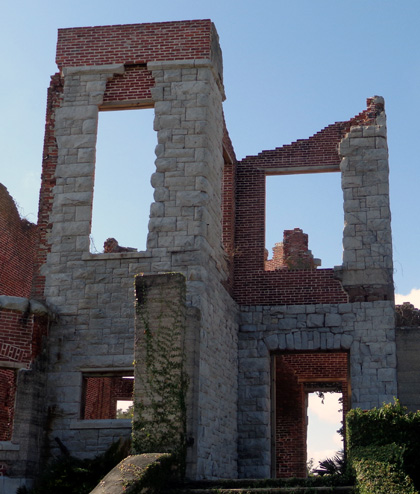
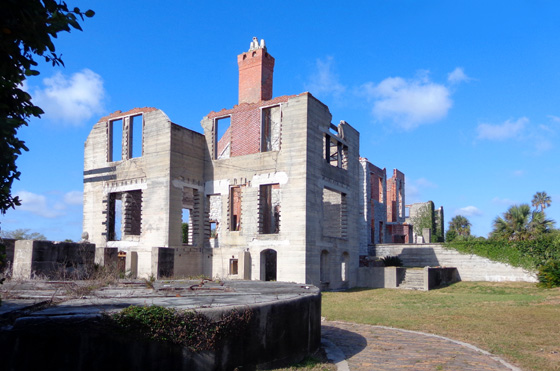
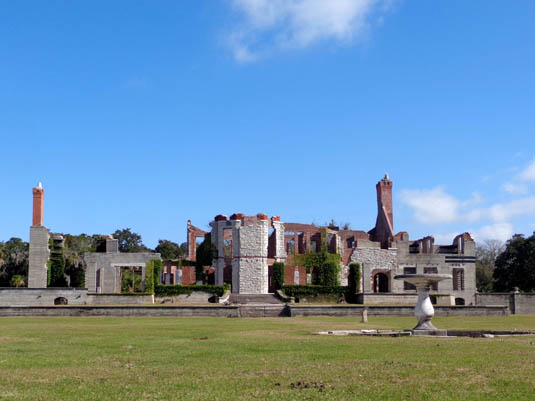
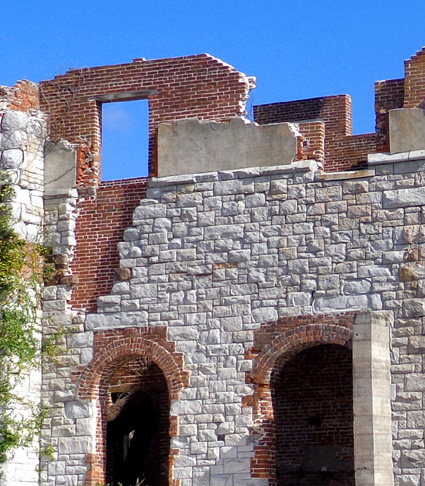
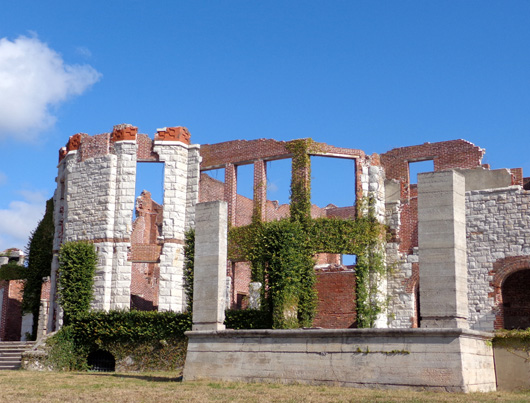
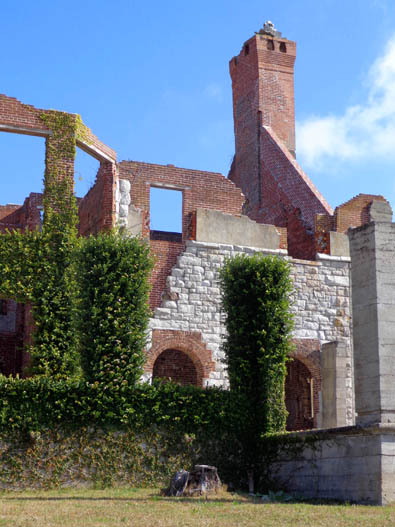
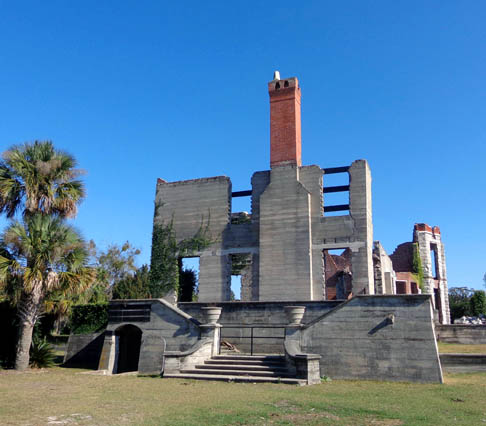
OTHER STRUCTURES ON THE DUNGENESS SITE
I had the Dungeness ruins and other buildings on the grounds mostly to myself.
I spent
almost an hour wandering around the large estate and down to the estuary.
One structure that is
still intact is the tabby house built for the Greene's gardener in 1800:
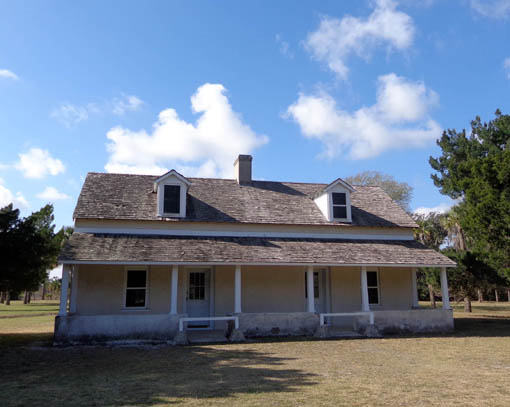
Tabby is a type of concrete made of materials abundant on the island
-- oyster shells, lime, sand, and water. An interpretive panel
indicates it is the oldest house on the island. After the Carnegies
bought most of the island this building served as their office
to manage the estate.
Nearby is a large pergola that was a pleasant shady spot covered
with flowering vines:
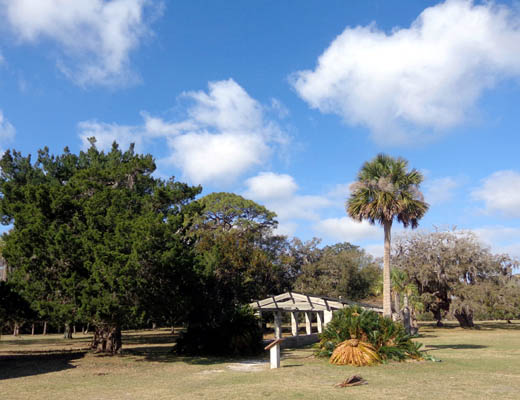
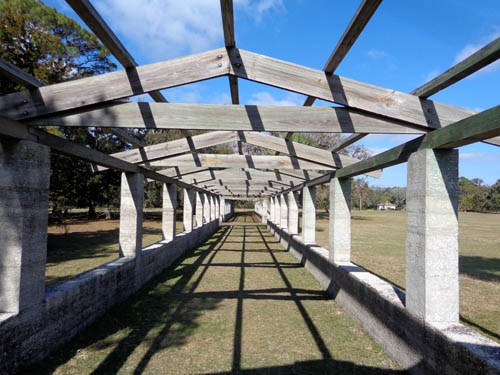
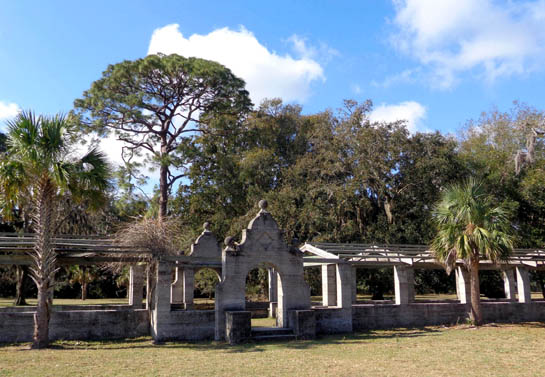
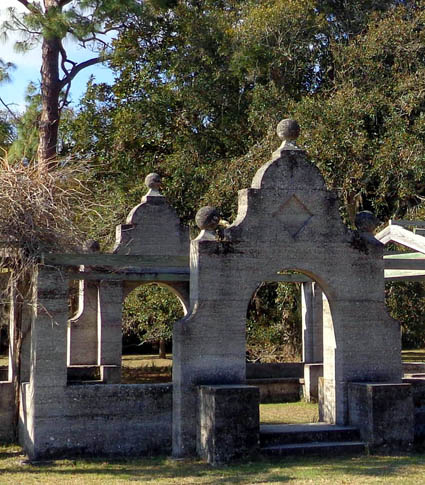
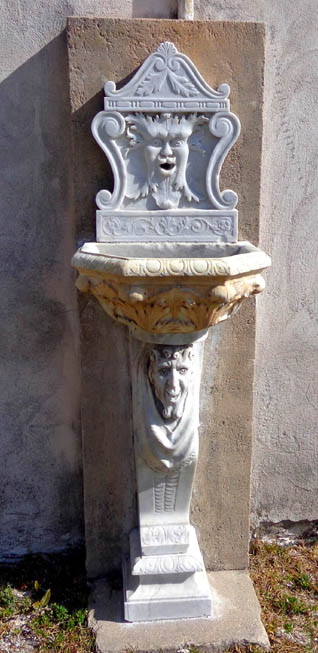
The three Carnegie mansions on the island, including this one, all had extensive formal
gardens with clipped hedges and sculptured fountains, surrounded by
massive live oaks, magnolias, palmettos, and marshes.
Only the hard structures and trees remain on the grounds at Dungeness but they are
still attractive.
As I walked around the grounds I passed by a spring house and large,
dilapidated greenhouse with low tabby walls. There is a lower terraced area between the house
and the marsh, with a nice view back to the ruins:
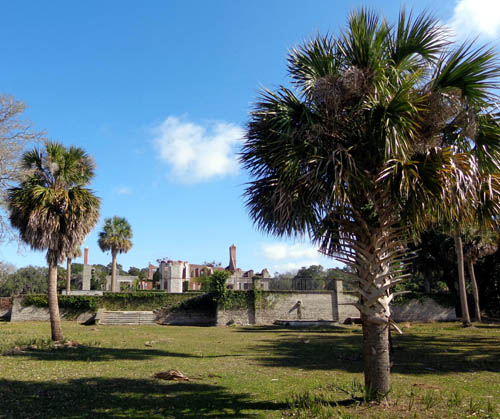
Next I came to a boat house by the wetlands on the Cumberland Sound side
of the estate:
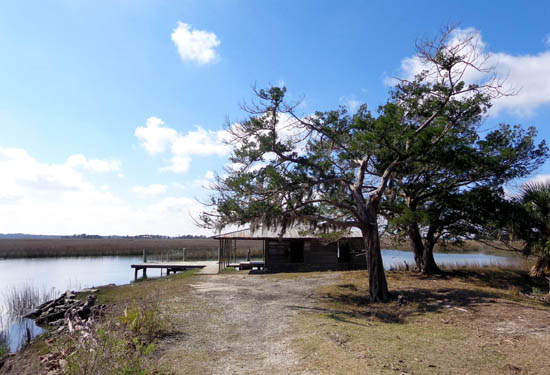
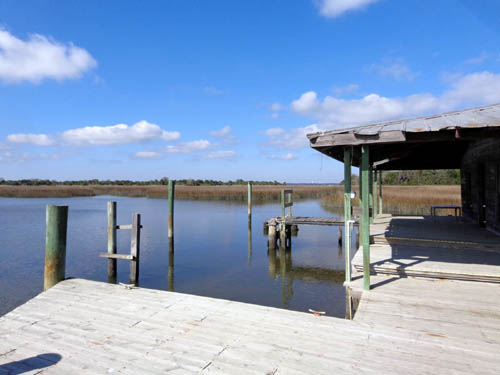
I walked back up to the level of the mansion and came to some buildings
that were used for recreational activities:
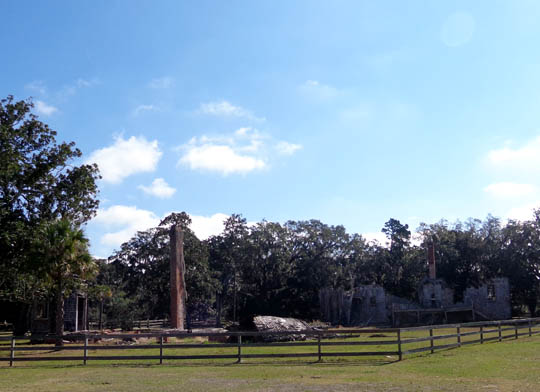
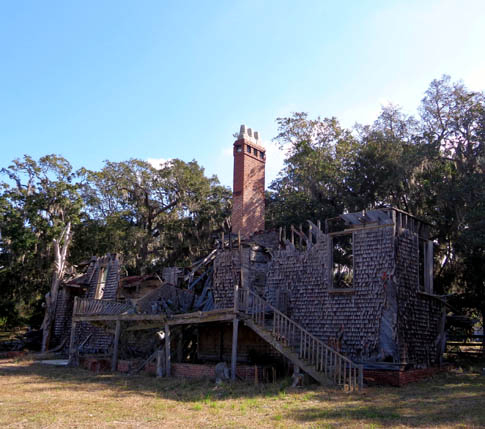
The two intact mansions on Cumberland
Island were also owned by the Carnegie family. One remains in family
hands and one is now owned by the National Park Service.
Greyfield
Inn was built for Thomas and Lucy's daughter Margaret
Ricketson in 1900.
Since 1962 it has been a private inn managed by Margaret's daughter Lucy
Ferguson and her family. It still contains many of the original period
furnishings:
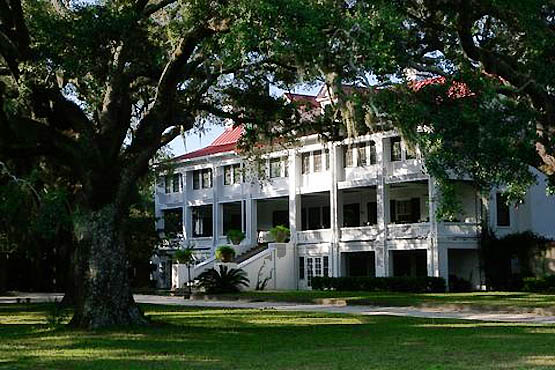
Greyfield Inn (photo from their
website)
Plum Orchard was built in 1898 for
Thomas and Lucy Carnegie's son George and his wife.
This Georgian Revival mansion is eight miles north of the Sea Camp dock
and closed most of the time. The best way to see it is on the Lands &
Legacies van tour:
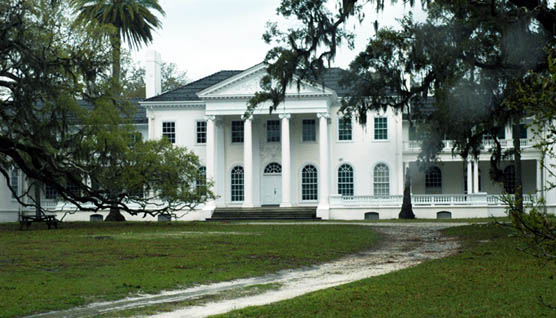
Plum
Orchard (photo from NPS
website)
Continued on the next page: Cumberland's white sand
dunes and beaches
Happy trails,
Sue
"Runtrails & Company" - Sue Norwood, Jim O'Neil,
Cody the ultra Lab, and Casey-pup
Previous
Next
© 2013 Sue Norwood and Jim O'Neil